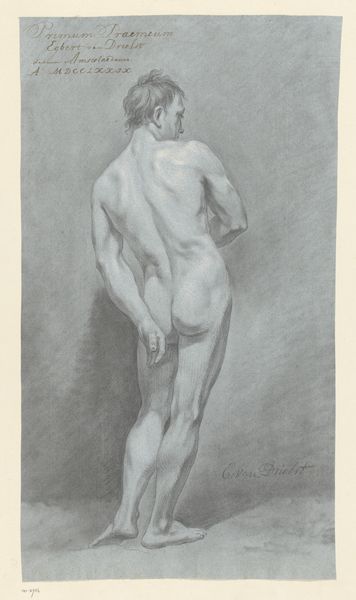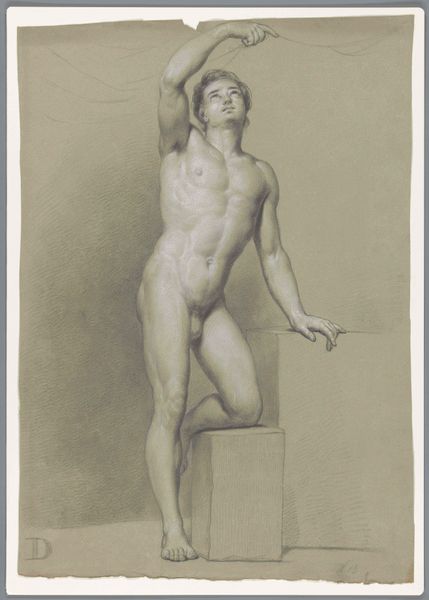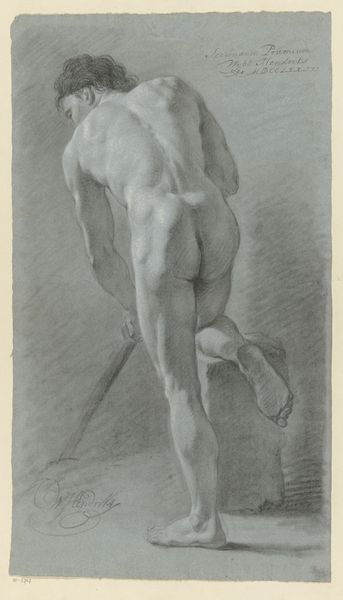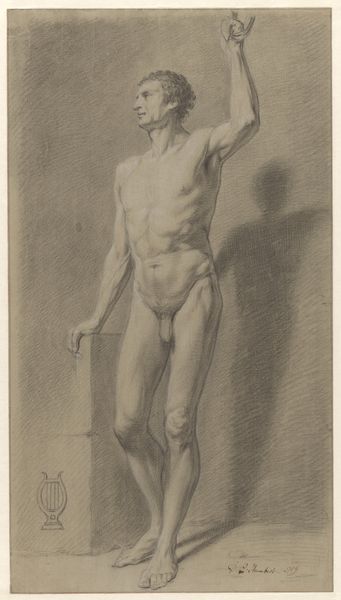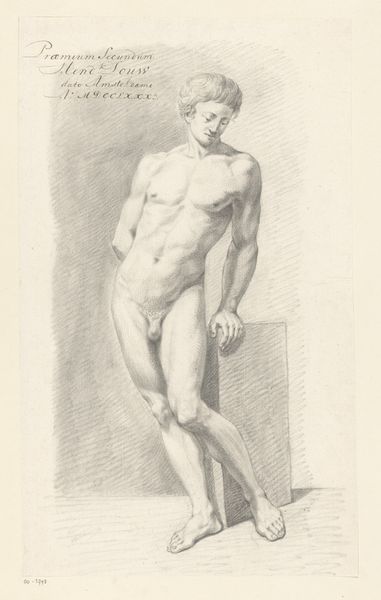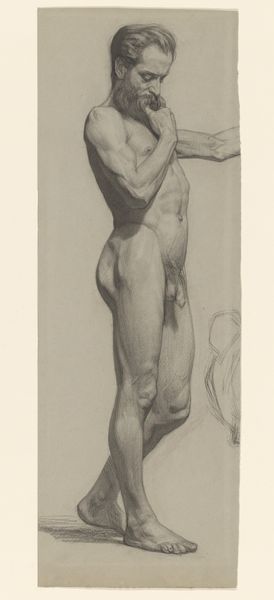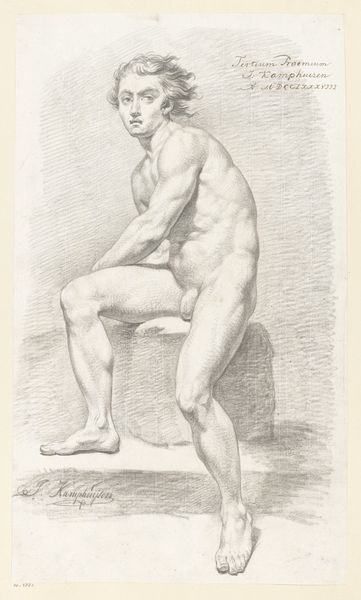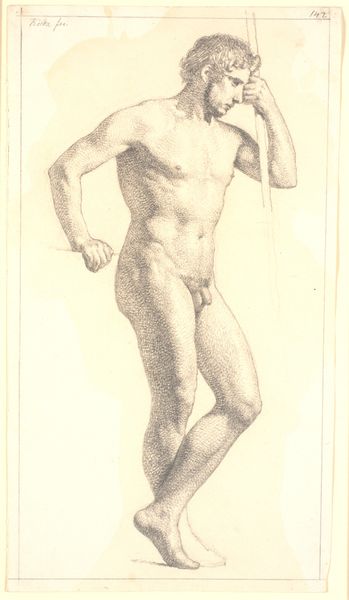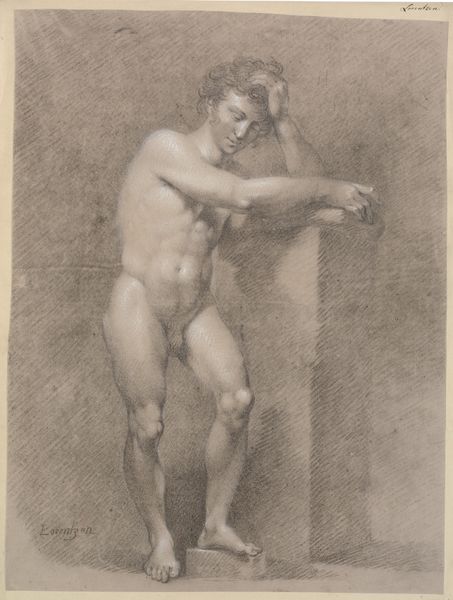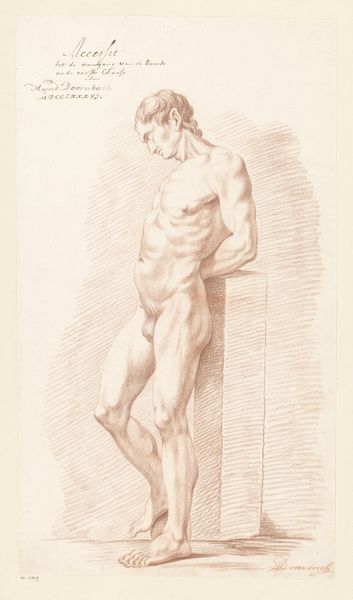
drawing, pencil, charcoal
#
portrait
#
drawing
#
pencil sketch
#
charcoal drawing
#
figuration
#
pencil drawing
#
pencil
#
portrait drawing
#
charcoal
#
academic-art
#
nude
Dimensions: height 503 mm, width 267 mm
Copyright: Rijks Museum: Open Domain
Curator: Dirk Versteegh's "Standing Male Nude, Front View (2nd Prize 1776)," likely created in 1776, showcases a classical academic approach to figure drawing. The artwork, rendered in pencil and charcoal, presents a full-length nude male figure, standing with a staff. What's your immediate impression of the piece? Editor: The tonality is immediately striking, creating a somber, almost ghostly presence. The figure seems both solid and ethereal, anchored by the sharp lines defining musculature, but softened by the blended charcoal. There's a tangible tension in his posture. Curator: Considering it was a prize-winning piece, we have to look at its material circumstances. This likely came out of an institutional environment focused on classical ideals. Versteegh demonstrates a learned mastery of anatomical rendering but he also suggests how artists learn by training under these material and societal constraints. Editor: I agree. Formally, notice how the composition adheres to established conventions - the contrapposto stance, the idealized proportions, the attention to light and shadow to model the figure's form. The application of charcoal isn't just about depiction, but about achieving the specific visual effects valued by academic artistic circles at that time. The light feels like a structural element. Curator: And it raises questions about the position of the artist, Versteegh. What opportunities and limitations shaped his practice and how did the socio-economic forces influence his ability to make art, to access education, to participate in competitions like this? The "2nd Prize" gives an idea about value being placed on male artists who draw in particular ways. Editor: Absolutely. Yet there's also an undeniable emotional quality to the work. The subdued palette, the subject’s slightly melancholic expression... It evokes a sense of introspective vulnerability, despite the figure's physical strength. This transcends mere academic exercise, giving an almost human quality to the rendering of an idealised male nude. Curator: His work speaks of artistic skill, classical ideals and the very real material pressures put on young artists by institutions like academies. His creative input shows the material forces which impact upon artwork creation. Editor: I’d add that while these material and social circumstances clearly play a role, let's not disregard the individual artist's touch—that expressive rendering of the subject, that understanding and utilisation of form and shade—that marks Versteegh's singular accomplishment in its moment and remains interesting today. Curator: Very true! The artwork provides multiple layers for exploration; the material context of art production informs, shapes, and promotes some aesthetic qualities over others, while individual artistic insights offer something unique and fresh.
Comments
No comments
Be the first to comment and join the conversation on the ultimate creative platform.
